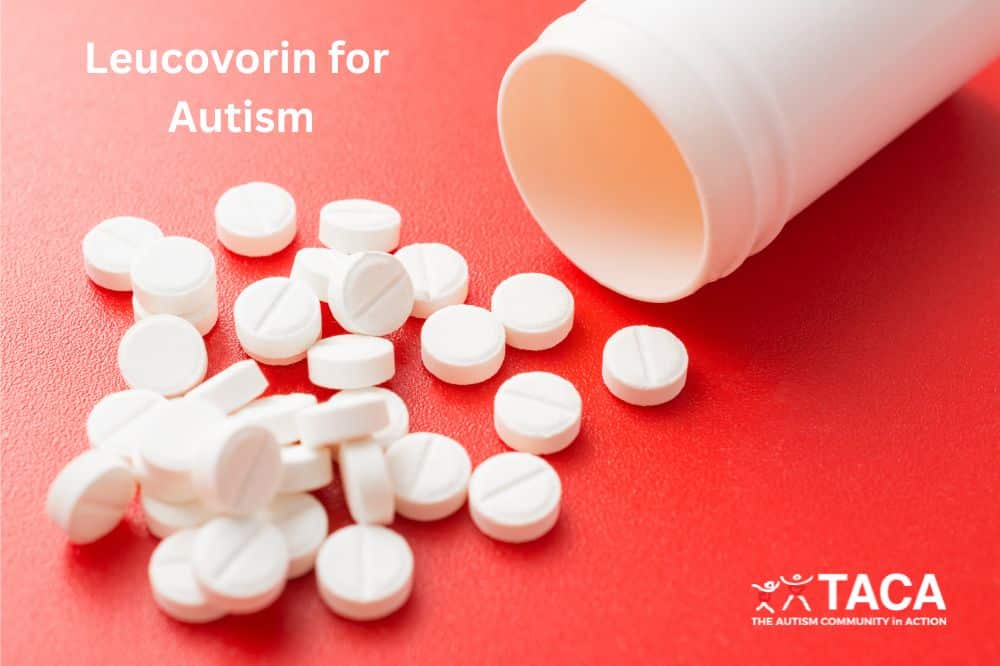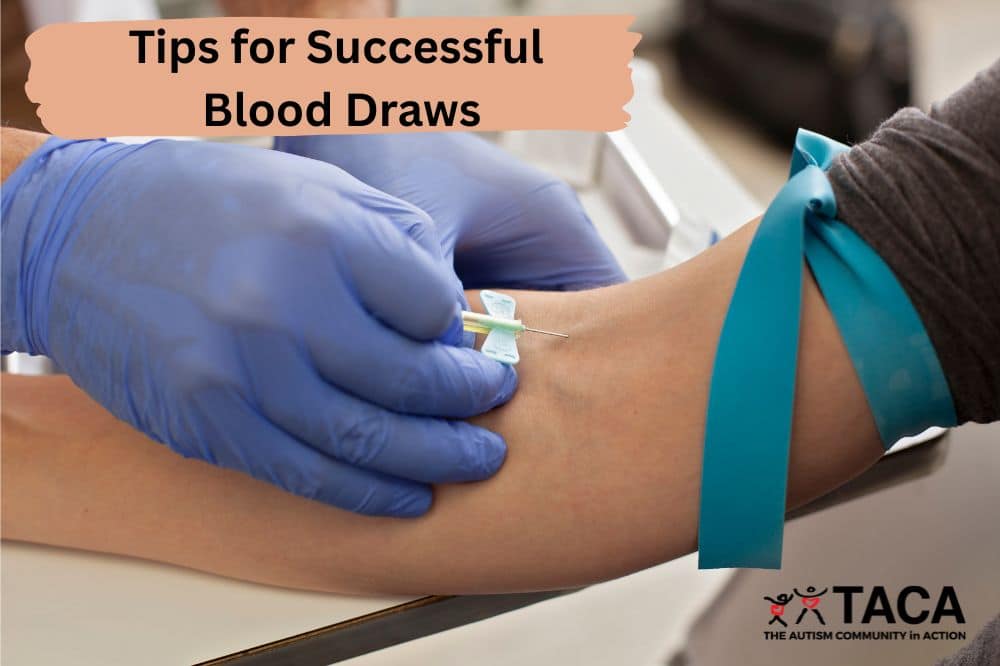Phenols, Salicylates, and Additives
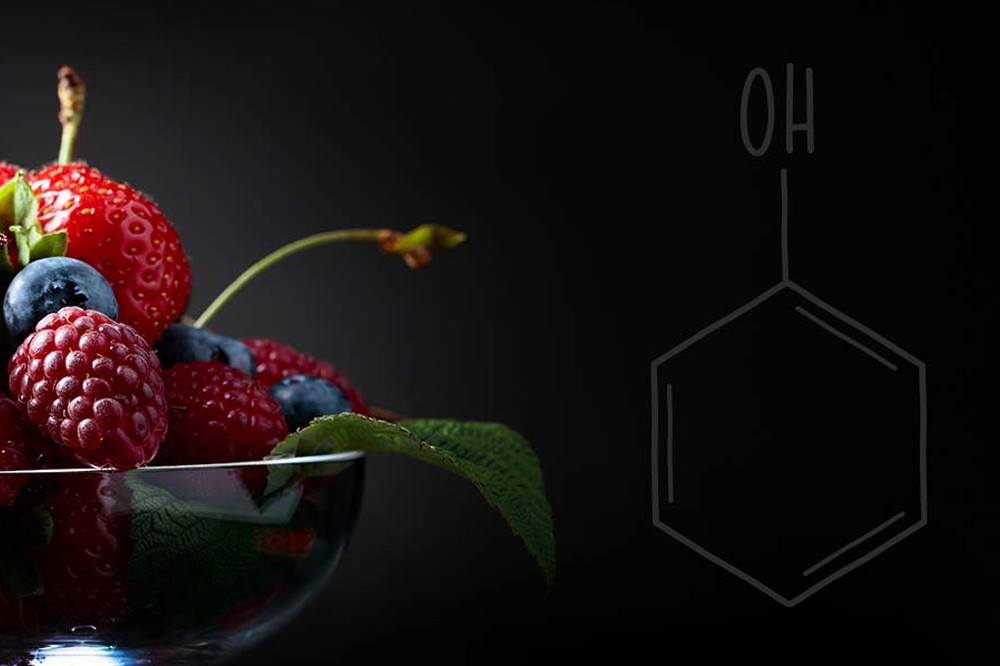
All contents of this resource were created for informational purposes only and are not intended to be a substitute for professional advice, diagnosis, or treatment. Always seek the advice of your physician, therapist, or other qualified health providers with any questions or concerns you may have.
Phenols and salicylates are chemical compounds found in fruit, vegetables, nuts, and some medications. These compounds are excellent antioxidants, so we typically think of them as very healthy. However, high levels of phenols and salicylates in certain foods seem to negatively affect some children with autism and individuals with sensitive digestive and immune systems.
In this article, we will discuss phenols and salicylates, specifically:
- What they are
- Why some children are sensitive to them
- Symptoms and testing
- Treatment options for those who have trouble processing foods high in phenols and salicylates (including a FREE PDF Download with information about ways to support phenol metabolism)
What are Phenols and Salicylates?
The term phenol refers to a large group of chemical compounds found in plants. Salicylates are a specific type of phenol. These beneficial compounds act as a preservative, protecting plants from bacterial/fungal infections, insects, and UV radiation damage.
Natural phenols are not only beneficial to plants but humans too. For example, phenols in fruits, vegetables, nuts, and seeds are excellent sources of antioxidants, which protect us from heart disease, promote healthy digestion, improve brain function, and reduce inflammation.
Also, processed and packaged foods contain phenols. However, many of these are synthetically produced phenols that manufacturers add to artificially flavor, color, and lengthen shelf life. Similarly, some medications, toothpaste, and lotion contain synthetically produced salicylates.
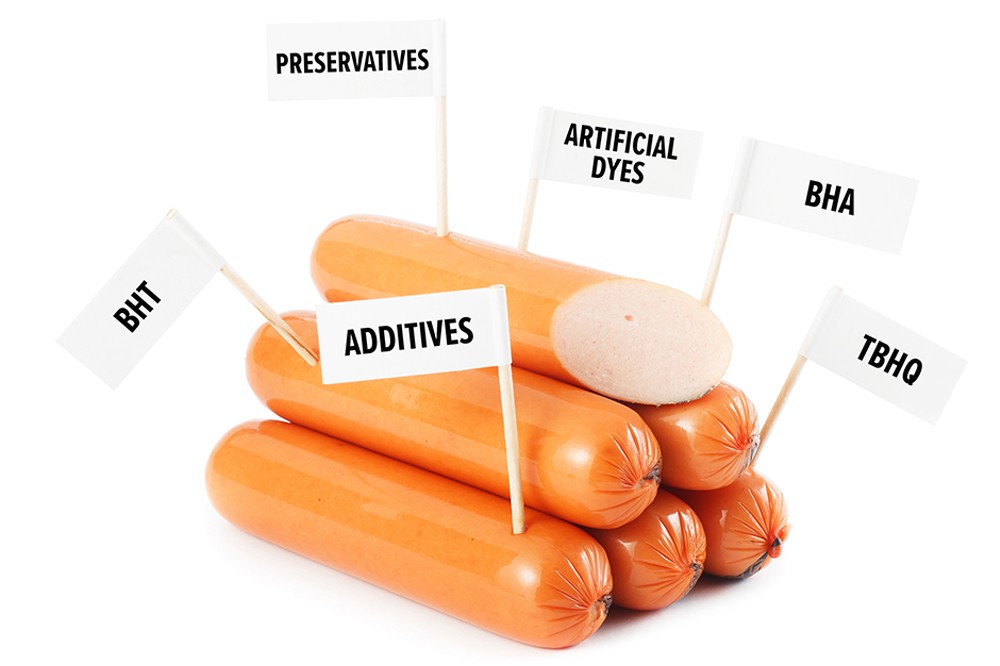
Why are Kids Sensitive to Phenols and Salicylates?
Even though phenols and salicylates are beneficial for our bodies, some people have adverse reactions to them. For example, a child with a phenol sulfurtransferase (PST) deficiency will have trouble processing foods high in phenols. PST is an enzyme that breaks down phenols, allowing the body to use what it needs and excrete what it doesn’t need. Accordingly, people with a PST deficiency have trouble detoxifying and clearing away phenols and salicylates, causing them to accumulate. As a result of this accumulation, symptoms of phenol sensitivities develop.
Symptoms and Testing
Physical and Behavioral Symptoms
Symptoms of a phenol/salicylate sensitivity vary and mimic other conditions, making it difficult to diagnose. A person with a phenol/salicylate sensitivity may experience some of the following adverse side effects:
- Physical:
- Headaches
- Hives, eczema, or changes in skin color
- Specifically, red ears and/or cheeks
- Allergy-like or respiratory issues:
- Runny and/or stuffy nose
- Sinus infection
- Nasal and sinus polyps
- Asthma
- Gastrointestinal issues:
- Abdominal pain
- Colitis
- Diarrhea
- Inflammation
- Behavior:
- Hyperactivity
- Mood swings, irritability, or aggression
- Stimming
- Laughing at inappropriate times
- Night waking
Testing
There is no known lab test for phenol and salicylate sensitivity. So, if your child’s doctor suspects a phenol/salicylate sensitivity is causing issues, they may place them on a food elimination diet with provocations to see if symptoms improve or worsen.
Additionally, your doctor may request a urine sample. This is because sometimes you will see high amounts of taurine in the urine if there is a problem converting sulfite (which is toxic) to sulfate, possibly indicating an issue with phenols.
Treatment Options for Phenol and Salicylate Sensitivities
Because almost all foods contain phenols, it is nearly impossible to avoid them altogether. Besides that, foods that contain phenols also contain essential vitamins and nutrients that kids need to grow up healthy and strong.
Because of this, treatment typically involves making sure the body isn’t overwhelmed by excess phenols and salicylates. This is achieved by decreasing the number of phenols the body has to process and supporting phenol metabolism.
For example, you can:
- Eliminate foods with artificial preservatives, dyes, and additives.
- Specifically, foods that contain natural or artificial flavorings, preservatives (BHA, BHT, and TBHQ), and dyes (red, orange, and green are the worst offenders).
- You can see evidence of this in studies conducted by Dr. Ben Feingold, Dr. Stephen Lockey, and others, which demonstrate that food dyes and food additives were responsible for hyperactivity in many of the children they had seen in their practices.
- Restrict vegetables, fruits, spices, legumes, and nuts that contain the highest levels of phenols.
- Eliminate foods that trigger your child’s symptoms (i.e., foods found, via elimination diet, to cause physical or behavioral symptoms).
- Reduce or eliminate exposure to non-food sources of phenols (Ibuprofen, Aspirin, mint-flavored toothpaste, etc.).
- Support the sulfurtransferase (PST) pathway with supplementation and by treating underlying medical conditions.
Download TACA’s FREE Tip Sheet for more information about:
- High phenol foods and lower phenol foods to replace them with.
- Supplements that help the body process phenols.
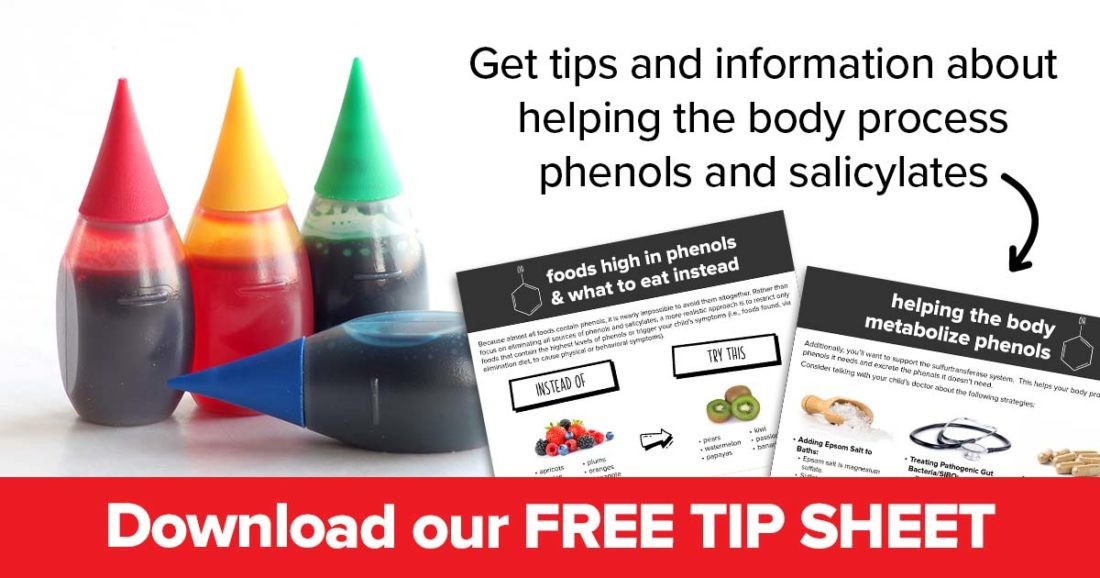
Also, visit the Feingold and FAILSAFE websites. Because both of these diets eliminate phenols and salicylates, they have great resources.
Conclusion
In conclusion, foods and food additives that contain phenols/salicylates are problematic for a subset of children and people with autism. These otherwise healthy foods can cause a range of symptoms from mild to severe. Being aware of the problem and working with your doctor to find ways to address the underlying issue can make your child more comfortable and happier.



